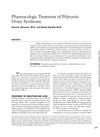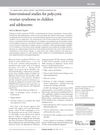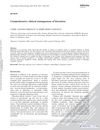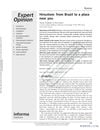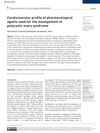Pharmacologic Therapy of Polycystic Ovary Syndrome
February 2007
in “
Clinical Obstetrics and Gynecology
”
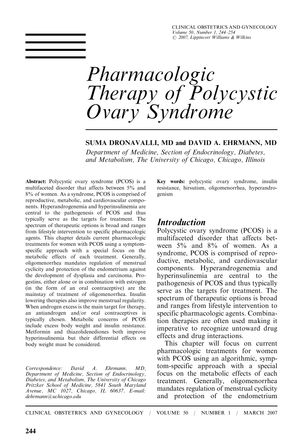
TLDR The document concludes that treating PCOS requires a combination of drugs to manage reproductive and metabolic symptoms, with more research needed on combination therapies.
The 2007 document outlines various pharmacologic treatments for Polycystic Ovary Syndrome (PCOS), targeting hyperandrogenemia and hyperinsulinemia. It recommends progestins, possibly combined with estrogen, for oligomenorrhea and antiandrogens or oral contraceptives for androgen excess. Metabolic issues are addressed with metformin and thiazolidinediones, which improve insulin resistance but have different effects on body weight. The document highlights the importance of considering metabolic impacts when prescribing PCOS treatments and suggests that newer, less androgenic progestins may be beneficial due to their favorable effects on lipids and SHBG levels. It also notes that while insulin-lowering agents are less effective for hyperandrogenic symptoms, they are useful for metabolic aspects of PCOS. Combination therapies may offer benefits without increasing adverse events, but more research is needed. The document emphasizes the need for comprehensive treatment approaches that address both reproductive and metabolic issues in PCOS.
